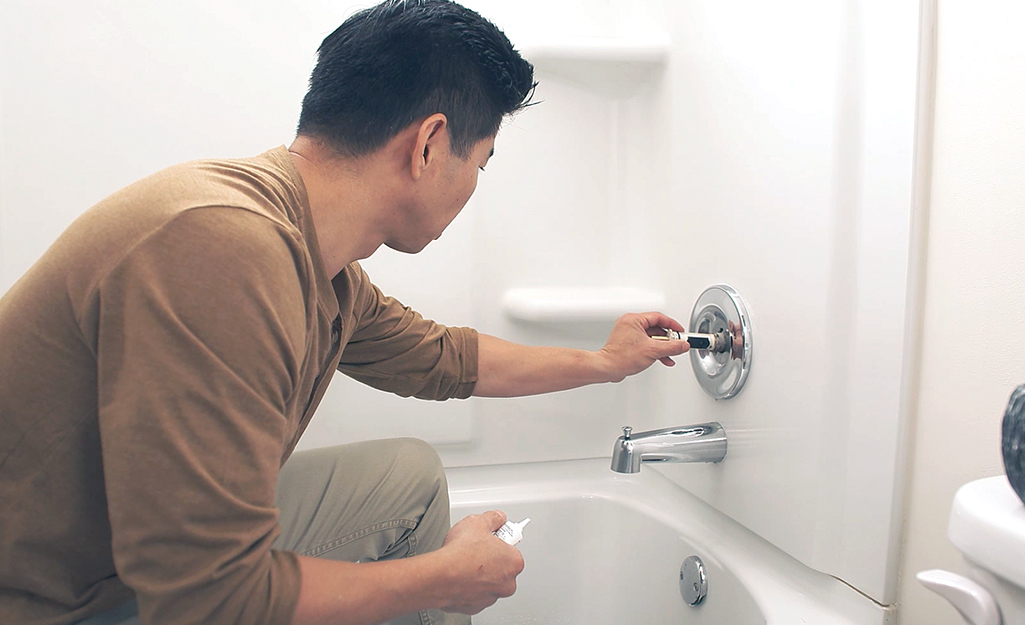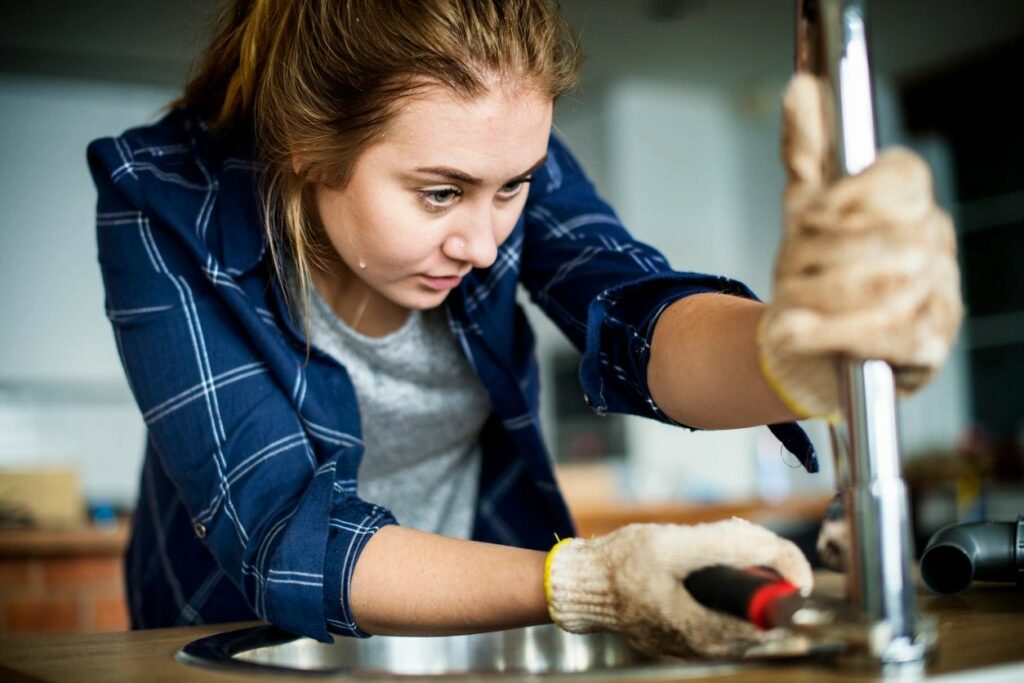Here in the next paragraphs you might get lots of reliable insight regarding What Causes Leaky Faucets & How To Fix Them.

Leaking faucets may appear like a small aggravation, yet their influence goes beyond just the inconvenience of the sound. From wasting water to incurring unneeded economic prices and wellness dangers, neglecting a leaking tap can cause different consequences. In this article, we'll look into why it's vital to address this common house problem promptly and properly.
Waste of Water
Environmental Impact
Trickling faucets add substantially to water wastage. According to the Epa (EPA), a solitary faucet trickling at one drip per second can lose more than 3,000 gallons of water each year. This not only stress water resources but likewise influences ecological communities and wildlife dependent on them.
Financial Prices
Enhanced Water Costs
Past the environmental effect, dripping taps can inflate water expenses substantially. The collected wastage gradually equates into greater utility expenses, which might have been avoided with timely fixings.
Potential Building Damage
Furthermore, long term dripping can result in damage to components and surface areas bordering the faucet. Water accumulation can trigger discoloration, deterioration, and even structural problems if left ignored, causing added fixing prices.
Health Concerns
Mold and Mildew Growth
The constant existence of wetness from a dripping faucet develops a perfect setting for mold and mildew growth. These fungi not just jeopardize interior air top quality but additionally present health and wellness dangers, particularly for people with respiratory conditions or allergic reactions.
Waterborne Conditions
Stationary water in trickling taps can come to be a breeding place for microorganisms and various other microorganisms, boosting the danger of waterborne diseases. Contaminants such as Legionella microorganisms prosper in stagnant water, potentially leading to significant illnesses when consumed or breathed in.
DIY vs. Specialist Repair work
Pros and Cons of Do It Yourself Repair Work
While some might attempt to fix a leaking faucet themselves, do it yourself repair work feature their own collection of challenges. Without appropriate expertise and tools, DIY efforts can exacerbate the concern or result in insufficient fixings, prolonging the issue.
Advantages of Working With a Professional Plumber
Hiring an expert plumber makes sure that the underlying source of the dripping faucet is dealt with successfully. Plumbing professionals have the know-how and equipment to detect and fix faucet concerns efficiently, conserving time and decreasing the risk of additional damages.
Step-by-Step Overview to Dealing With a Dripping Faucet
Tools Called for
Before trying to deal with a leaking faucet, gather the required devices, including a flexible wrench, screwdrivers, substitute parts (such as washing machines or cartridges), and plumber's tape.
Typical Faucet Issues and Their Solutions
Recognize the type of tap and the specific concern causing the drip. Typical troubles include damaged washers, corroded shutoff seats, or faulty O-rings. Describe supplier instructions or on the internet tutorials for detailed assistance on repairs.
Preventive Measures
Routine Upkeep Tips
To stop dripping faucets, carry out regular upkeep such as cleansing aerators, evaluating for leakages, and changing damaged parts immediately. Furthermore, think about setting up water-saving gadgets or upgrading to much more effective fixtures.
Importance of Prompt Repairs
Addressing dripping faucets as soon as they're seen protects against additional water wastage and potential damages, eventually saving both water and cash over time.
Impact on Property Worth
Assumption of Well-Maintained Residential Property
Maintaining a property in good condition, consisting of addressing upkeep concerns like leaking taps, enhances its viewed worth and desirability among prospective buyers or renters.
Impact on Resale Worth
Residences with properly maintained plumbing components, consisting of faucets, command higher resale values in the real estate market. Attending to leaking taps can add to a favorable impact during property assessments and negotiations.
Environmental Duty
Individual Contribution to Preservation
Taking duty for repairing leaking taps straightens with more comprehensive efforts toward water preservation and environmental sustainability. Every individual's activities collectively make a significant effect on preserving precious sources.
Lasting Living Practices
By focusing on timely fixings and taking on water-saving behaviors, individuals add to lasting living methods that benefit both present and future generations.
Conclusion
Resolving a trickling faucet goes beyond plain benefit; it's a crucial step towards conserving water, minimizing economic costs, and securing health and residential property. Whether via DIY repair services or expert support, acting to deal with trickling taps is a tiny yet impactful means to advertise responsible stewardship of resources and add to a much healthier, more lasting future.
How to Fix a Leaky Faucet: Step-by-Step Repair Guide
A leaky faucet may seem like a simple annoyance, but if it's not fixed promptly, that leak could cost hundreds to potentially thousands. From water damage to mold, mildew, and high water bills, even a tiny leak can be catastrophic if left unattended. Damage like this can even affect the overall value of your home, so it's important to take the right approach for leaky faucet repair. You may need the help of a plumber in some cases, but we've got a few tips you can try on how to fix a leaky faucet before calling the pros.
Four Faucet Types
When you're learning how to fix a leaky faucet, the first step is knowing what kind of faucet you're working with! There are four common types.
Cartridge Faucets
Cartridge faucets come in one- or two-handled varieties. In one-handled cartridge faucets, hot and cold water combines in a single cartridge. In the two-handled versions, hot and cold water are controlled separately and mixed in the faucet.
Ball Faucets
Ball faucets have a single lever you push up and down to adjust the pressure and rotate to change the temperature. A slotted metal ball controls the amount of water allowed into the spout.
Compression Washer Faucets
They're the oldest type of faucet, but they're still used in many homes — especially older ones. Compression faucets have two separate handles that, when turned, raise or lower the washer that seals a water valve. This valve stops water from flowing through the faucet when it is turned off.
Disc Faucets
Disc faucets rarely need to be repaired due to their maintenance-free design. The water flow is controlled by two discs — the upper one raises and lowers against a fixed lower disc, creating a watertight seal. If your disc faucet starts leaking, you may need to replace the seals or clean residue buildup from the inlets.
Fixing a Leaky Faucet
Step 1: Turn Off the Water
Whether you're learning how to fix a leaky bathtub faucet or how to fix a leaky kitchen faucet, always turn off the water supply to your working area when you're fixing a leak. The last thing you want is a flood added to your list of things to fix.
Look for the shutoff valves below your sink or around the tub and turn them clockwise to stop the water flow. If your faucet doesn't have shutoff valves, you may need to turn off the water for the whole house. Check to make sure it's off by turning the faucet on. If nothing comes out, you're ready to start the repair.
Step 2: Take Apart the Faucet
How you disassemble your faucet depends on the type of fixture you have. You can use a flathead screwdriver to remove the caps on top of the handle or handles for cartridge and compression faucets. Inside, you should see handle screws. Unscrew these with a screwdriver to remove the handle.
Disc- and ball-style faucets will typically have an inlet screw near the handle, and removing that will reveal the interior of the faucet.
Detach the Valve Stem
For cartridge- and compression-style faucets, you'll see the inner valve stem or cartridge once you remove the faucet handles. If you have a compression faucet, unscrew the brass valve stem. If you have a cartridge faucet, pull out the cartridge. If your cartridge has been in place for a while, it may require some tools or extra force to remove it due to mineral deposits.
Examine and Replace Parts
Once you've removed the parts, check them out to confirm what needs to be replaced. You may see corroded rubber washers, O-rings, stems, or cartridges. On a ball-style faucet, check the seats and springs for damage.
If you need to repair a leaky disc faucet, check the inlet and seals on the lower disc.
Once you determine what parts must be replaced, visit your local hardware store. Bring the damaged parts with you to ensure you can purchase the correct components to replace them.
Clean Valves and Faucet Cavity
If you've removed a stem or cartridge, you may notice mineral buildup in the faucet's threads. Use white vinegar to clean the valve seat by soaking it for a few minutes, then scrub it away with a soft toothbrush and rinse with warm water. You can also clean the interior of the faucet in the same way.
Reassemble the Faucet
Once your faucet is cleaned and the required parts have been replaced, it's time to reassemble it. Put the pieces back together and slowly turn the water supply back on. Doing this slowly is crucial because too much initial water pressure can damage the new hardware you've just installed.
https://homewarranty.firstam.com/blog/how-to-fix-leaky-faucet

I stumbled upon that review on Water Dripping from Faucet: Why and How to Fix when doing a search on the web. Sharing is nice. Helping people is fun. We take joy in reading our article about Should I Repair or Replace a Leaky Faucet?.